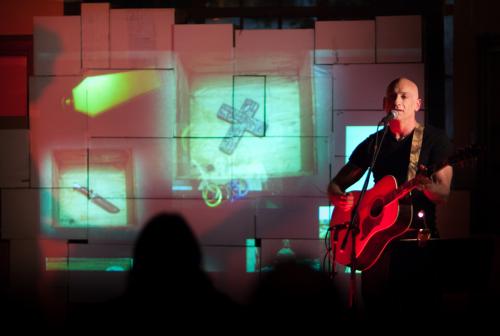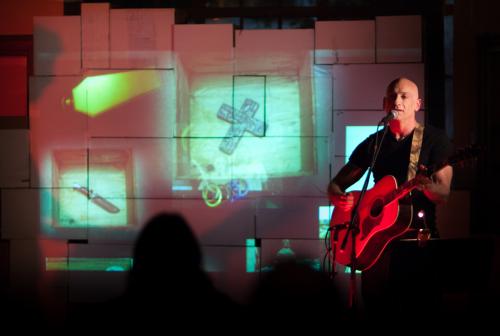Crowdsourcing Our Grief: Healing through a Social Media Art Project

Sometimes, when the grief gets particularly bad, it seems like the only way out is through magic.
It was about twenty years ago when I first thought that. At the time, I was living in New York, right at the height of the AIDS crisis, watching scores of friends whither away. But because I was an artist, I knew that my version of “magic” was imagination. So I wrote and created and recorded, memorializing people and an era. And it got me through.
But it also made me see the trauma of others in grief. And I noticed a sore spot we all had. A spot that lingered.
Things. We all carried things we could not bear to throw away. They could be mundane things – a tie or a coffee mug, a scrap of paper or a beachball that still had the breath of our loved one inside it. These things had meaning we could not explain to anyone else. They felt like a piece of them, and to throw them away would be to throw THEM away, somehow.
And yet, for far too many of us, we could not bear to look at these things either. So they ended up shut in drawers or hidden in boxes in the closet. We all seemed to own boxes of grief, and no way either to really keep them or to let them go.
It took twenty years for me to figure out how to pull imagination together with grief and find a way out – or if not out, then through. And I realized it involved not just me, but all of us.
I created what critics call a “transmedia” piece – a fancy way of saying that the work would live in live performance, on video, in music and also – maybe especially -- online. And that is where you come in.
I ask you to open up one of those boxes (if that’s where your loved one’s things are). Take out your phone and just snap a photo of it. Just a simple, ordinary picture.
Then either email it to me at [email protected] - or if you’re a social media type, post it directly to Instagram with the hashtag #intheseboxes.
Your photo will be incorporated into the video projections used in the live performance, currently touring the nation. And it will also live online in perpetuity in what I call an online cemetery at http://www.InTheseBoxes.com. Instead of letting their things molder alone in some closet, they can become part of a living work of art.
I only began touring this piece in February, but I am moved each time I look through the photos people have contributed. It reminds me of a kind of small, intimate version of the AIDS Quilt: you look around and realize that each photo of a pot or a bowl or an old ice cream scoop represents someone who mattered so deeply, and was loved so much, and is now, still, so so needed and missed.
With luck, I hope, this will make it easier for all of us to face these objects. Easier to bring them out of their boxes and put the most important up on shelves and – hardest of all – let the others go. In the end, the objects are not our loved ones, but reminders of them. Or – as a priest suggested to me at the Washington DC performance – they are “pointers to the divine”, to the love that was bigger than our bodies and bigger than our things.
I am no different from all of you. In fact, an aneurysm recently took another friend, and now I sit here with a student film he made sitting in a box. He obviously made it with great feeling – how can I just throw it away? This is not a struggle that any of us can skip over.
Maybe I need to post it to InTheseBoxes.com too.
Article Images




Comments